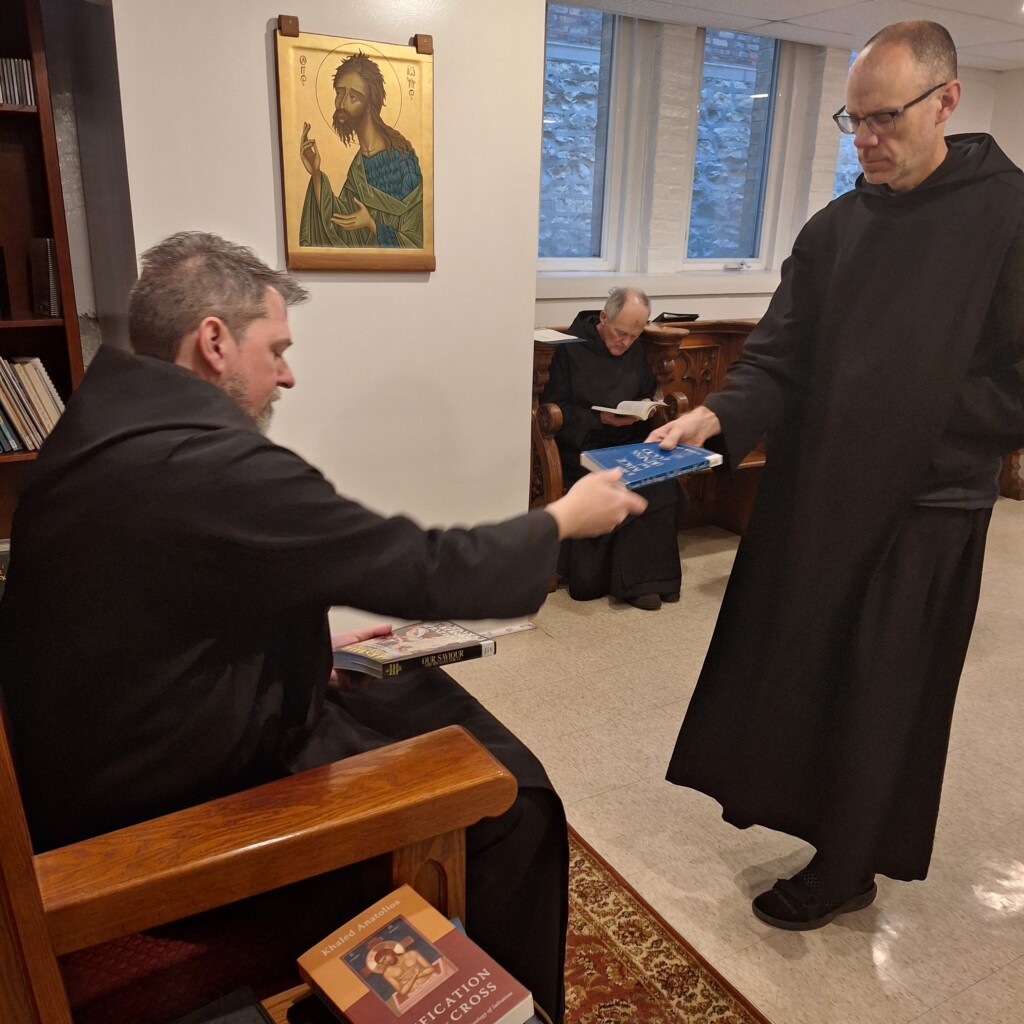This year, we are reading Luke’s versions of these events, and it is noteworthy that for Luke, they both look forward. To what do they look forward? Let’s look at each one. On the First Sunday of Lent, the temptation of Christ ended with an ominous note: “When the devil had finished every temptation, he departed from him…for a time.” What is Luke getting at here? The temptations aren’t over, is what he is saying. When we aren’t experiencing temptations, that doesn’t mean that they are over and done. The Tempter has just departed for a time. Temptations will return, and our job is to be vigilant.
But I think that Luke also had something more specific in mind. How about this: the great war between Jesus and the Devil, between the Son of Man and the ruler of this world, isn’t over when Jesus wins this opening battle. The war won’t be decided until the Crucifixion. At that time, Jesus’s human nature will again be tempted to use His divine power in opposition to the will of His Father. The Father’s mysterious will is to send His Son into the world as a man, to save us by sharing in our mortality, our weakness and suffering. When we arrive at Holy Week, and we recall all of Jesus’s suffering—the betrayals, the mockery, the scourgings, and finally Crucifixion—this is the Devil throwing every he has at the Son of God, Who conquers Him by a quiet obedience and faith.
The Resurrection marks the definitive destruction of the power of hell. But I’m getting ahead of myself here. We need to see how the Transfiguration also looks forward to Holy Week and Easter. In this case, it is quite direct. When Moses and Elijah appear with Jesus, what are they discussing with each other? Here is what Luke says: “Moses and Elijah…appeared in glory and spoke of his exodus that he was going to accomplish in Jerusalem.” Jesus is going to accomplish an “exodus.” Isn’t this interesting? So much could be said about what this means, since the Exodus is, in some ways, the theme of the entire Torah. Let’s focus on one important aspect of the Exodus, to see a deeper connection with Moses and Elijah.
What do these two have in common? Both of them spoke to God on Mount Sinai. When God first spoke to Moses on Sinai, He commissioned him to go to Egypt to bring the Israelites out, right? But when Moses went to Pharaoh and demanded that he let the people go, it was not his immediate aim to lead them to the Promised Land. Rather, his goal was to worship God on Mount Sinai. It was to make a new covenant with God—in a certain sense, a renewal of the covenant between God and Abraham. On Mount Sinai, the terms of the covenant are sharpened: God will adopt Israel as His beloved people, and the people, for their part, will obey God’s law.
But why did Elijah go to Mount Sinai, or Horeb, as it was called in his time? As a matter of fact, God asks Elijah that very question, “Elijah, why are you here?” And what does he respond? “Because your people have forsaken your covenant, thrown down your altars…” and so on. Note that God does not renew the covenant at this time; He simply sends Elijah back with reassurance that a remnant of the people had remained faithful. From that point on the prophets will have the job of reminding the people of the covenant and calling them back to it.
Alright, back to the Transfiguration. Jesus, we said, was going to accomplish His Exodus. Where is He leaving and where is He going? He is leaving this world, the fallen world, and going to the new creation, what we might call heaven, the right hand of the Father. Along the way, just like Moses at Mount Sinai, He is going to ratify a new covenant, in His own Blood. He will give us the new law—this is why the Father says, “Listen to Him!”
Now I’ve downplayed something crucial here: for Jesus to leave this world and pass over into the new world, He must die. And with that observation, we are brought back, finally, to Lent. Lent is a time to battle temptations after the model of Jesus, and it is also a time to practice mortification. For us, this mortification of fasting, almsgiving and prayer, involves a frank acknowledgement of our sin. The goal isn’t to make us feel guilty and therefore punish ourselves the more, even if contrition and reparation are part of the process. What is the goal? In the gospel, the Apostles see it before their eyes: glory. The glory of God and, dare we say, the deification of humankind in Jesus Christ. Every time we accept mortification, we are stepping tentatively out of this world and into the next, with the hope of glory. When we see the brilliant light of the Transfiguration, shining through the body of Jesus, we are seeing a foreshadowing of our own transfiguration. Saint Paul says that Jesus “will change our lowly body to conform with his glorified body.”
So the goal of our Lenten discipline and the goal of Christ’s Exodus is the regeneration of creation and the reinstitution of all of the children of Adam and Eve as His beloved sons and daughters. Lent is not, therefore, a time in which we try to “make ourselves” better by increments. It is a time to participate in the death of Jesus so that we may also share in His bodily Resurrection from the dead.

